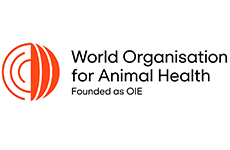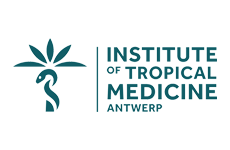- Infectious Diseases of Livestock
- Part 1
- Vaccination: An approach to the control of infectious diseases
- Vectors: Ticks
- Vectors: Tsetse flies
- Vectors: Muscidae
- Vectors: Tabanidae
- Vectors: Culicoides spp.
- Vectors: Mosquitoes
- Classification, epidemiology and control of arthropod-borne viruses
- Special factors affecting the control of livestock diseases in sub-Saharan Africa
- The control of infectious diseases of livestock: Making appropriate decisions in different epidemiological and socioeconomic conditions
- Infectious diseases of animals in sub-Saharan Africa: The wildlife⁄livestock interface
- Vaccination: An approach to the control of infectious diseases
- African animal trypanosomoses
- Dourine
- Trichomonosis
- Amoebic infections
- GENERAL INTRODUCTION: COCCIDIA
- Coccidiosis
- Cryptosporidiosis
- Toxoplasmosis
- Besnoitiosis
- Sarcocystosis
- Balantidiosis
- Leishmaniosis
- Neosporosis
- Equine protozoal myeloencephalitis
- GENERAL INTRODUCTION: BABESIOSES
- Bovine babesiosis
- Equine piroplasmosis
- Porcine babesiosis
- Ovine babesiosis
- GENERAL INTRODUCTION: THEILERIOSES OF CATTLE
- East Coast fever
- Corridor disease
- Zimbabwe theileriosis
- Turning sickness
- Theileria taurotragi infection
- Theileria mutans infection
- Theileria annulata theileriosis
- Theileriosis of sheep and goats
- Theileria buffeli⁄orientalis infection
- Non-pathogenic Theileria species in cattle
- GENERAL INTRODUCTION: RICKETTSIAL, CHLAMYDIAL AND HAEMOTROPIC MYCOPLASMAL DISEASES
- Heartwater
- Lesser known rickettsial infections in animals and humans
- Chlamydiosis
- Q fever
- Eperythrozoonosis
- Bovine Haemobartonellosis
- Potomac horse fever
- GENERAL INTRODUCTION: ANAPLASMOSES
- Bovine anaplasmosis
- Ovine and caprine anaplasmosis
Vaccination: An approach to the control of infectious diseases
This content is distributed under the following licence: Attribution-NonCommercial CC BY-NC  View Creative Commons Licence details here
View Creative Commons Licence details here

Vaccination: An approach to the control of infectious diseases
B A ALLSOPP, L A BABIUK AND S L BABIUK
Introduction
It must have been observed for centuries that people exposed to a pathogen were often resistant to reinfection by the same or a related pathogen, but the first record of anyone acting on this observation is that of the English physician Edward Jenner.52 On 14 May 1796 Jenner inoculated James Phipps, a healthy eight-year-old boy who had never been exposed to smallpox, with cowpox virus, and challenged him 48 days later with a virulent dose of smallpox virus. Phipps did not react, and with this momentous medical discovery was born the era of immunology and vaccinology. Since then smallpox has been eradicated by vaccination, and human and animal losses and deaths due to other infectious and parasitic diseases have been dramatically reduced by the development of a range of vaccines. Even so both animals and humans continue to suffer from many common diseases, as well as new and emerging diseases. Among many reasons for this are:
- sub-optimal management conditions;
- exposure to pathogens at a young age before vaccination is recommended;
- unusual or unexpected patterns of the pathogenesis of certain organisms;
- the emergence of new forms of old diseases;
- the emergence of totally new pathogens and diseases (e.g. Nipah virus); and
- the relative ineffectiveness of some existing vaccines.
Despite the current shortcomings of vaccination it seems likely that it is, and will continue to be, a more durable and cost-effective method of combatting bacterial and viral infections than all other therapeutic and prophylactic methods combined. Micro-organisms have survived for millions, even billions, of years in the face of a continuously changing chemical environment, and they are only going to be briefly inconvenienced by the human introduction of new chemicals into their surroundings. The same is true for arthropod vectors of disease. These facts rule out any long-term disease containment strategy based solely on the use of pharmaceuticals, acaricides or insecticides, however successful these may be in the short term. The development of new vaccines is the only long-term strategy that can be foreseen at present for the control of diseases of animals or humans. Mammalian immunological defence mechanisms against infectious agents have also evolved over millions of years, and must therefore be high up on any arbitrary scale of optimality. Finding new ways to specifically stimulate the immune system has to be the most likely way to achieve the lasting control of infectious disease.
Vaccines licensed for use in humans and animals at present are primarily either killed vaccines or attenuated vaccines, produced by one of two conventional methods. In the case of killed vaccines the pathogen is grown in large quantities and then inactivated by some method that prevents its replication but does not significantly alter the antigenic properties. Attenuated vaccines employ a live mutated agent that has been selected in vitro for reduced pathogenicity but that is still able to replicate in the animal. Each of these conventional vaccine types has inherent advantages and disadvantages, and there is a need to find new ways to make safer, cheaper and more effective vaccines. Advances in genomics, biotechnology, immunology, and understanding of the pathogenesis of diseases have resulted in the development of many new types of vaccines, such as subunit vaccines, live genetically modified vaccines, and nucleic acid (or ‘genetic’) vaccines.
Principles of vaccination
The primary mammalian immune response to an invading agent, involving the clonal expansion of small populations of virgin T and B cells, typically takes two weeks to develop, and this is often too slow to prevent serious disease occurring. The secondary response to any subsequent reintroduction of the same agent, however, involves the stimulation of a population of specific memory cells that were produced during the primary response. This is a larger population than that of the original virgin cells, so the secondary response is faster than the primary response, typically being less than one week.17, 45, 57, 66 The secondary response will usually clear the pathogen before overt disease occurs. Successful vaccination depends upon exploiting this mechanism by specific stimulation of the primary response with an agent inherently unable to cause disease. During any subsequent exposure to a virulent form of the pathogen the secondary immune response prevents the occurrence of disease. This seems to be a simple concept, but mammalian immune systems involve inordinately complex cascades of molecular signals and cellular responses. For effective immunization we need to know which antigens elicit the appropriate specific protective response, and how best to deliver those antigens, for example, administration of vaccines via the most commonly used routes, either intramuscular or subcutaneous, may induce good systemic immunity but may not induce mucosal immunity, thus failing to protect at the site of entry of many pathogens.51, 72, 73 If the virulence factor of a bacterium is an extracellular toxin, it will be inappropriate to use whole cell bacterins to protect against this particular infection. Until recently few of the infectious agents encountered in veterinary medicine were characterized at the molecular level, nor had the host...
To see the full item, register today:




